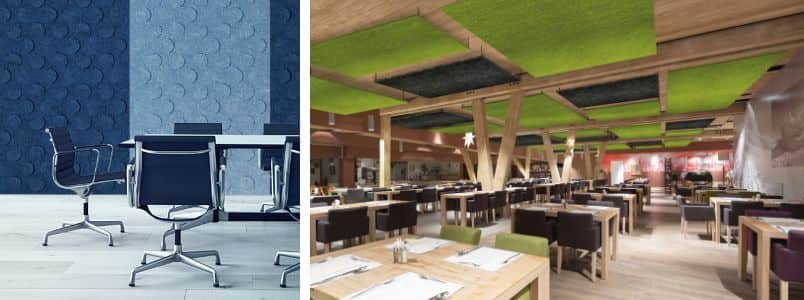Achieve Perfect Harmony in Your Home With Reliable Soundproofing Approaches for Optimum Acoustics
Soundproofing plays an important role in attaining optimal acoustics, affecting the means we experience and connect with our living rooms. By recognizing the principles of soundproofing, determining sources of sound disruptions, selecting suitable materials, and using tried and tested methods, you can transform your home into a shelter of harmony where sound boosts rather than interrupts.

Comprehending Soundproofing Fundamentals
What are the fundamental principles that underlie effective soundproofing techniques? Soundproofing is rooted in the understanding of just how sound waves traveling and communicate with various products. The secret to successful soundproofing hinges on interrupting or soaking up these acoustic waves to lessen their transmission from one room to one more. This can be attained through various methods, such as including mass to wall surfaces, floorings, and ceilings, sealing voids and fractures to avoid audio leakage, and utilizing sound-absorbing products like acoustic panels or carpets (acoustic solutions).
Understanding the idea of sound transmission class (STC) scores is critical in picking the right materials for soundproofing. The STC ranking determines exactly how well a material can decrease air-borne sound transmission through it, with greater STC rankings suggesting better soundproofing capabilities. In addition, considering the impact of impact insulation class (IIC) rankings for decreasing effect noise, such as footprints or furniture moving, can further boost the effectiveness of soundproofing solutions.
Examining Noise Resources in your house
Building upon the fundamental understanding of soundproofing principles, a critical step in reliable noise mitigation within your home involves identifying and analyzing the different sources of undesirable sound. Noise resources can be categorized right into two main types: air-borne sound, which includes seem like discussions, music, and tv, and effect noise, such as footsteps or things being dropped. To examine these resources, take into consideration the different areas in your home and the tasks that typically occur in each. The living area might have a lot more airborne sound from home entertainment systems, while effect sound from steps may be a worry in locations with difficult flooring like corridors or cooking areas.
Furthermore, take into consideration outside sources of sound, such as web traffic, neighbors, or neighboring construction, which can also affect the acoustics within your home. acoustic solutions. Determining these resources will aid you prioritize locations for soundproofing and choose one of the most effective options. By determining the details noise sources in your house, you can customize your soundproofing initiatives to achieve ideal results and produce an extra relaxed and harmonious living atmosphere
Selecting the Right Soundproofing Products
When choosing soundproofing materials for your home, it is crucial to prioritize effectiveness and compatibility with your certain sound problems. Take into consideration aspects such as the kind of sound you are attempting to obstruct, the degree of soundproofing required, and the aesthetic appeals of the products to ensure they blend effortlessly into your living area.
One usual material for soundproofing is acoustic foam. This light-weight and flexible product is excellent for soaking up mid to high-frequency noises, making it perfect for music spaces, home movie theaters, or workplaces. One more choice is mass-loaded vinyl, which works in shutting out low-frequency noises like website traffic or machinery audios. For wall surfaces and ceilings, soundproof drywall is a preferred choice due to its capability to reduce sound transmission in between areas.
Curtains and carpets made from sound-absorbing products are also efficient in wetting sound, particularly in areas with hard surface areas that create sound to jump around. Keep in mind, the key to effective soundproofing is picking the ideal materials that resolve your important link particular noise issues while enhancing the general convenience and acoustics of your home.
Executing Soundproofing Strategies
To successfully apply soundproofing strategies in your home, it is important to begin by evaluating the areas that are most vulnerable to sound infiltration. Usual sources of noise can consist of exterior audios from website traffic, next-door neighbors, or close-by building and construction, as well as interior sources like appliances, plumbing, and entertainment systems. When you have recognized these areas, you can start carrying out soundproofing solutions tailored to every specific space.

For even more considerable sound reduction, take into consideration installing soundproof drywall, double-glazed windows, or resilient channels to separate vibrations. Additionally, rearranging furnishings, including bookshelves, or incorporating sound-absorbing products can better improve the acoustics of an area. By strategically implementing these soundproofing methods, you can produce a quieter and more tranquil living atmosphere in your house.
Preserving and Improving Acoustic Setting
After applying soundproofing methods to resolve sound seepage in your house, the emphasis moves in the direction of keeping and enhancing the acoustic environment to make certain a consistently tranquil home. To maintain optimal acoustics, consistently evaluate soundproofing materials for wear and tear, ensuring they remain efficient in obstructing unwanted sound. Keep windows and doors effectively sealed to avoid sound leak and take into consideration adding weather condition stripping or door moves for extra soundproofing.
Improving the acoustic setting can include calculated positioning of furnishings, rugs, and drapes to wet sound representations and echoes. Using sound-absorbing materials such as acoustic panels or foam can even more boost the overall audio high quality in your house. acoustic solutions. Furthermore, incorporating soft home furnishings like pillows and blankets can help in reducing sound echo, developing a much more enjoyable auditory experience
Furthermore, spending in sound-absorbing décor aspects like shelfs, tapestries, or plants can add to a well balanced acoustic setting. Regularly decluttering your room can additionally protect against acoustic waves from bouncing off surfaces, ultimately enhancing the total acoustics of your home. By consistently preserving and improving your acoustic atmosphere, you can create an unified and relaxing space on your own and your household.
Conclusion
In conclusion, attaining perfect harmony in your home with effective soundproofing techniques is essential for optimum acoustics. By understanding soundproofing fundamentals, assessing noise resources, choosing the best products, carrying out techniques, and maintaining the acoustic atmosphere, you can produce a relaxed and enjoyable space without unwanted noise disturbances. look at this now Focusing on soundproofing efforts can substantially boost the overall lifestyle in your house.